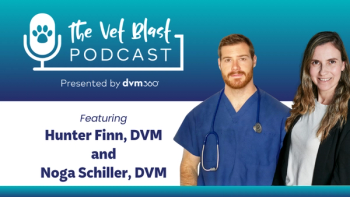
Canine laryngeal paralysis, Part 2: Surgical treatment, aftercare, prognosis and complications
The tie back remains the most common surgical method for correction.
Last month, we looked the epidemiology, diagnosis and medical management of laryngeal paralysis in dogs. The most effective means of treating laryngeal paralysis is with surgery. However, the limitations and potential complications of surgery should be understood and carefully explained to the clients before commencing.
The ideal treatment for this disease would be to reverse the underlying neuropathy or myopathy that affects the cricoarytenoideus dorsalis (CAD) muscles. At this time, no medical therapy accomplishes this, and surgery to achieve this goal entails grafting neuromuscular pedicle transfers from nearby functional muscles onto the CAD muscles. While elegant in principle, the technique for reproducible success with such surgery in dogs remains elusive. Hence, the operations that are currently offered are those that share the common goal of widening the glottal diameter.
It is important to stress that such surgery is not restoring normal function to the larynx. It is equally important to remember that this complex organ not only has evolved to open the glottis in response to needs for oxygen delivery and for phonation, but also to close, mostly as a way of protecting the airway during swallowing of food and liquids, since the pathways for air movement and swallowing evolved with an unfortunate crossing within the pharynx. The loss of this latter function helps explain the signs of dysphagia often noted before treatment and has major implications in the postoperative phase. It also means that dogs with megaesophagus are at much higher risk for aspiration pneumonia after surgery—a factor that might alter the client's decision.
Surgical options
Widening of the glottal opening may be accomplished via partial laryngectomy, laryngoplasty or some combination of these.
Partial laryngectomy usually entails bilateral ventriculocordectomy and unilateral or bilateral partial arytenoidectomy, literally carving a bigger opening. Such surgery (especially arytenoidectomy) may induce severe bleeding and laryngeal edema and may cause quite a bit of discomfort for the patient. Dogs may require a temporary tracheotomy if swelling is severe, and hospitalization times may be prolonged and intensive.
Laryngoplasty techniques are those that strive to widen the glottis without removing tissue. Some are invasive into the laryngeal lumen (e.g., castellated laryngofissure), while others allow manipulations to remain extraluminal. In the latter category is the most widely used and recommended technique, the arytenoid lateralization laryngoplasty, commonly referred to as a tie back. With minor modifications based on the surgeon's preference for positioning, incision, suture material and location of the prosthetic suture or sutures, the shared goal is to place one or two sutures from the muscular process of the arytenoid cartilage (insertion point for the CAD muscle) to either the caudodorsal aspect of the cricoid cartilage (the natural origin of the CAD muscle) or the lamina of the thyroid cartilage. As these sutures are tied, they mimic the contraction of the CAD muscle and, thus, abduct the arytenoid.
A newer concept in laryngoplasty is the use of nickel-titanium alloy (Nitinol—NDC) stents. The goal is to provide sufficient reduction in open-epiglottis airway resistance (to alleviate signs of obstruction) while increasing the closed-epiglottis airway resistance with a potential decrease in the risk for aspiration pneumonia. Some preliminary research with stents has been published, but results of clinical trials have not yet been reported.
Figure 1A: The preoperative appearance of the larynx during inspiration of a dog with bilateral laryngeal paralysis. Note the airway obstruction produced by the paradoxical adduction of the arytenoids and vocal folds. (Photo courtesy of Dr. Brendan McKiernan.)
Because normal function is not restored, the downside of widening the glottis is increasing the risk for aspiration of food or liquid into the trachea or beyond, with resultant increased coughing, gagging, choking or, in the worst instances, signs of aspiration pneumonia. So it is a balancing act between adequate increased glottal widening and overcorrection that places the patient at increased risk for aspiration. A recall of fluid dynamics reminds us that resistance to flow in a tube is inversely proportional to the radius of that tube raised to the fourth power. Thus, small changes in diameter can result in huge differences in resistance. As surgeons, this means that only modest lateralization should dramatically reduce airway resistance. Hence, arytenoid lateralization is usually only done unilaterally, even though affected dogs are paralyzed bilaterally, and the degree of abduction need not be maximal to achieve clinically beneficial effects (Figures 1A and 1B).
Figure 1B: A laryngoscopic view after unilateral (left) arytenoid lateralization laryngoplasty, or tie back. Note the permanently abducted left arytenoid cartilage (to the viewer's right) as well as the absence of any blood or swelling associated with the procedure. Also note that the inability of this arytenoid to adduct during deglutition renders the airway at some increased risk for aspiration. Unilateral procedures are chosen (even though affected dogs have bilateral paralysis) precisely for this reason. Further enlargement of the rima glottidis offers minimal advantage in reducing airway resistance, but would greatly increase the risk for aspiration due to the inability to adduct during swallowing. (Photo courtesy of Dr. Brendan McKiernan.)
Arytenoid lateralization surgery is most commonly performed on the left side because most surgeons are right-handed, so the left side is generally easier to operate on. If surgery fails (e.g., suture breakage, cartilage tearing), it provides the contralateral side as a spare. There has been some investigation into selectively choosing the side to operate based on the location of the esophageal ostium relative to the glottis, with the thinking that selection of the side farthest away from this opening might reduce the risk for aspiration. This concept has not yet been validated as being clinically significant.
Postsurgical considerations
One of the rewarding aspects of arytenoid lateralization surgery is the obviation for intraluminal manipulations or dissections, which usually translates into rapid, pain-free recoveries after surgery. Most dogs can be discharged the day after such surgery and require minimal special care.
Most dogs can eat and drink fairly normally after tie back surgery. It may be beneficial to initially divide their daily food intake into smaller meals and, likewise, to limit gulping of water in large volumes. Dusty food should be avoided since it may induce coughing. Each dog requires some individual titration to determine the characteristics and frequency of feeding to best reduce signs of dysphagia and cough, but with time most can resume the same feeding regimen that had been used before surgery.
Many of these dogs will feel well enough after surgery to start barking incessantly. Although they will usually lose their resonance and have a hoarse sound to their barking, this violent activity places the maximal strain on the tie back and, therefore, should be prevented. This is another reason to discharge these dogs from the hospital as soon as practical (as most dogs will be more relaxed, less stimulated and quieter at home) and to continue the use of tranquilizers as needed.
Dissection in the neck may result in mild seroma formation in some dogs, which can be treated conservatively as needed. Neither corticosteroids nor antibiotics are routinely required in the perioperative or postoperative periods with this operation.
Long-term, warn clients that their dogs' voices, even if still preserved before surgery (often they have already had a change in phonation), will be permanently altered. I also counsel clients not to allow their dogs to swim any longer, since dogs—particularly retrievers—tend to skim the surface of the water with their mouths open, which would put their minimally protected airways at undue risk for aspiration.
While published reports suggest a significant incidence of postoperative aspiration pneumonia, my experience has been that this is an infrequent complication and that many of these already older dogs can enjoy a significant increase in longevity (often years) with good qualities of life. In dogs in which laryngeal paralysis is part of a more systemic neuromuscular disorder, the prognosis may be more limited because of progressive esophageal or appendicular dysfunction.
Dr. Fingeroth is senior staff surgeon at the Orchard Park Veterinary Medical Center in New York. He is also a consultant to the Veterinary Information Network in the areas of orthopedics and general soft tissue surgery, as well as oncologic, endocrine and neurosurgery. He has been ACVS board-certified since 1988.
Newsletter
From exam room tips to practice management insights, get trusted veterinary news delivered straight to your inbox—subscribe to dvm360.





